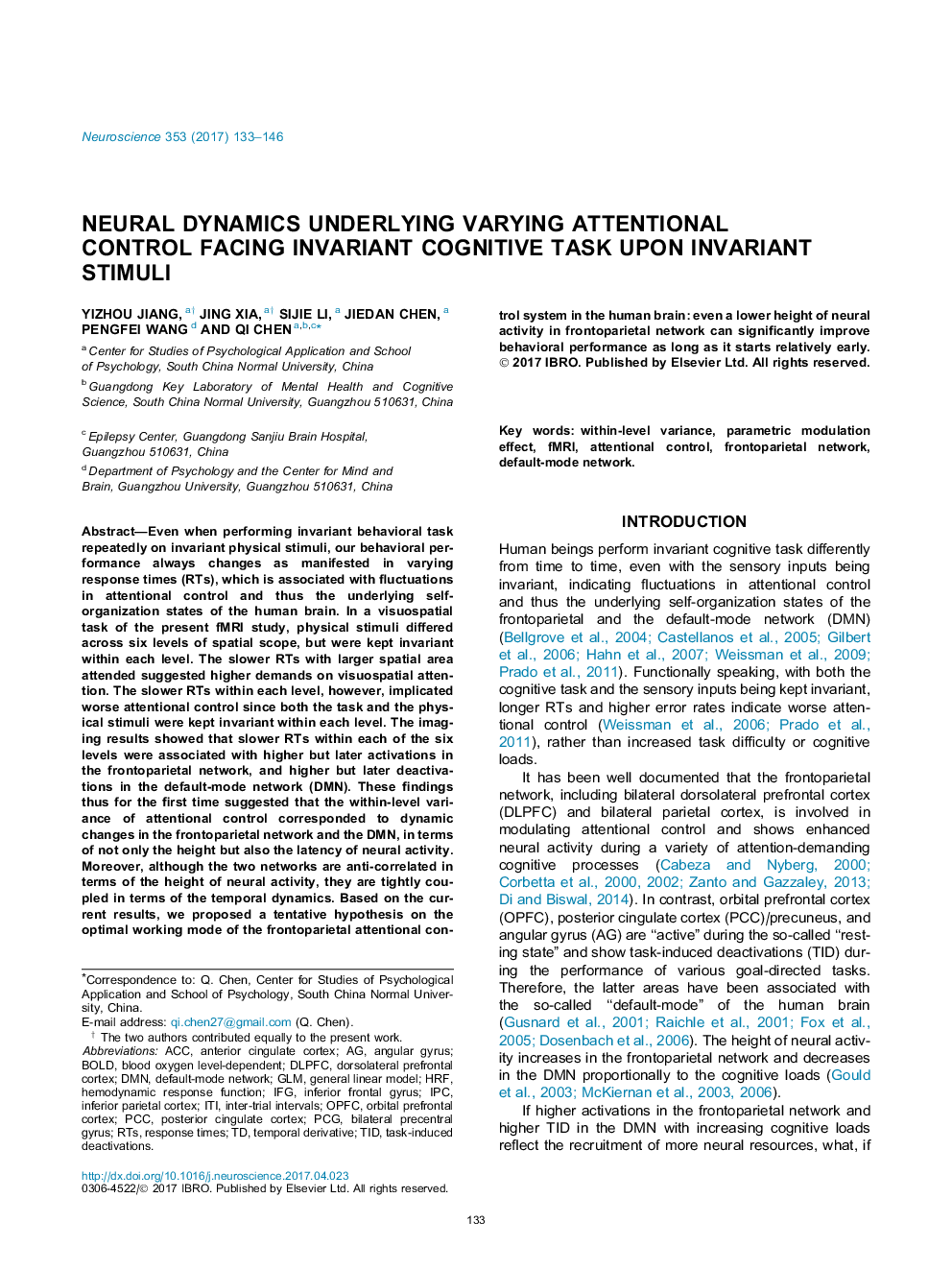ترجمه فارسی عنوان مقاله
دینامیک عصبی در اختیار کنترل های مختلف توجه قرار گرفته است که بر روی محرک های غیرمستقیم با وظیفه شناختی غیرمستقیم مواجه است
عنوان انگلیسی
Neural dynamics underlying varying attentional control facing invariant cognitive task upon invariant stimuli
| کد مقاله | سال انتشار | تعداد صفحات مقاله انگلیسی |
|---|---|---|
| 123785 | 2017 | 14 صفحه PDF |
منبع

Publisher : Elsevier - Science Direct (الزویر - ساینس دایرکت)
Journal : Neuroscience, Volume 353, 14 June 2017, Pages 133-146

